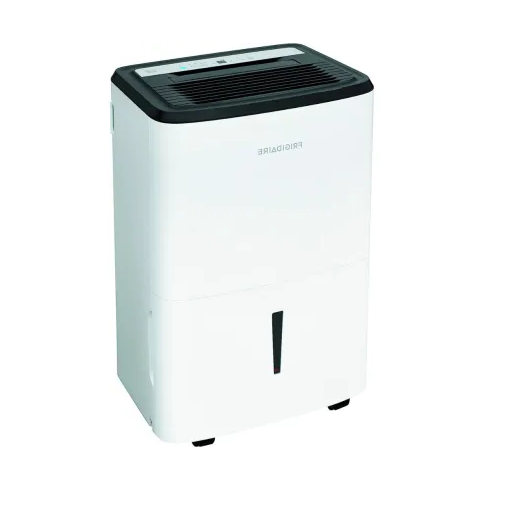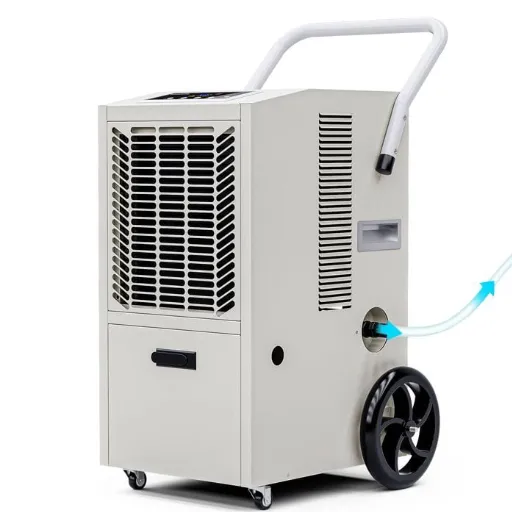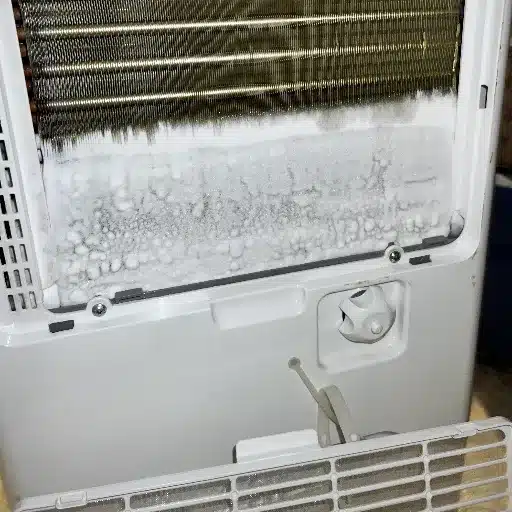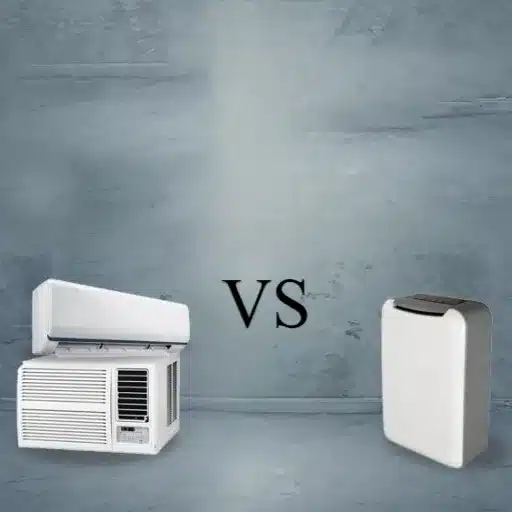A damp and humid basement is more than just an inconvenience—it can lead to structural damage, mold growth, and even health issues if left unaddressed. Choosing the right dehumidifier is an essential step in protecting your basement and ensuring a healthy and comfortable living environment. But with so many options on the market, how do you know which one is best for your needs and budget? This guide provides you with everything you need to make an informed decision. From understanding the factors that influence the cost of a dehumidifier to uncovering the key features to consider when selecting one, we’ll walk you through the essentials. Whether you’re shopping for a budget-friendly model or a high-capacity unit, this article offers practical advice to help you make the best investment for your home.
Understanding Dehumidifiers
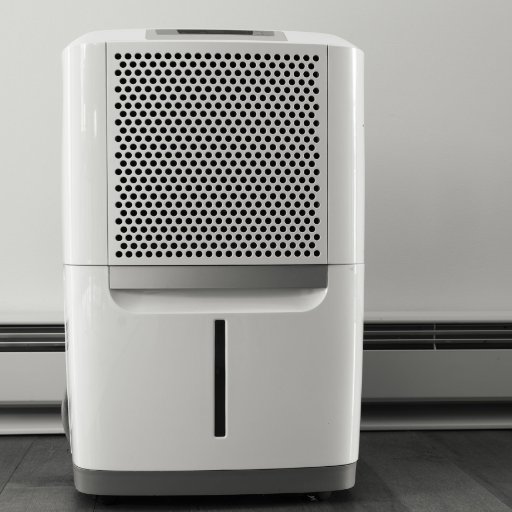
What is a Dehumidifier?
Maintaining and controlling humidity levels in indoor spaces through removing excess moisture from the air is what the dehumidifier mainly attends to. The higher the level of humidity, the greater the chances of mold formation and an environment conducive to dust mites, which can eventually contribute to health issues or even damage human homes. Dehumidifiers work to keep the ideal indoor climate, especially in high-humidity situations.
In a dehumidifier, the moist air is drawn in, goes over cold coils where the water vapor condenses out into a liquid, and the drier air is ejected back into the room. Depending on the dehumidifier model, the water collected might go to a tank that one empties out or be directed to drainage. In any case, most modern dehumidifier models are equipped with humidity controls to keep the airway at a set comfortable humidity, which is generally around 30-50%.
Dehumidifiers are offered in all sizes, from pocket-sized portable units to ones that are large enough to take care of a whole-house situation. Choose your dehumidifier depending on the size of the space, humidity level, and any special considerations like noise or energy levels. They improve air quality and protect the home structure, furniture, and belongings against long-term damage from water.
How Do Dehumidifiers Work?
Dehumidifiers travel in daylight, drawing in moist air from the outside atmosphere, then removing excess water vapor, which is either collected in a reservoir or drained away via a hose. The actual procedure begins with a fan pulling in the humid air. The air then crosses over cooled coils or refrigeration elements that chill it down inside the dehumidifier. As its temperature decreases, the moisture within the air condenses into water droplets that are collected into a storage tank or drained away through a drain system. After that, the dry air is reheated to a comfortable temperature and released back into the room.
The two main dehumidifying processes are refrigerant-based and desiccant-based types. Refrigerant dehumidifiers extract water by condensation and therefore perform worst when hot and dry. Conversely, desiccant dehumidifiers use absorbent materials to capture moisture, allowing them to perform better when it is cold. Both systems work toward the same end but vary in favorability depending on climate and application requirements.
There are extra features integrated into modern dehumidifiers, making them more efficient and user-friendly. Those features include adjustable humidity settings, hygrometers, and automatic shut-off. Such advanced models are also energy-efficient, supplying the user with further advantages in the way of power-saving and price-cutting over an extended period. By getting rid of excess humidity, dehumidifiers promote not only healthier indoor air but also treat the preservation of ends concerning structural integrity and longevity of homes and other spaces.
Importance of Dehumidifiers in Basements
Due to their subterranean location, basements tend to be highly humid places since the moisture from the soil and the absence of proper ventilation add to the excess dampness. Therefore, it is very crucial for dehumidifiers in such spaces to control humidity levels and ensure that these levels are maintained in the recommended range of 30-50%. This prevents moisture from weighing down, which would otherwise foster unhealthy molds and mildew with peculiar smells.
The dehumidifying process protects the structures of the basement by reducing moisture presence. When suffering from increased damping conditions, wood expands, metal corrodes, and walls or flooring gradually crack. Mpoineruht od gnisatroppusni setalpmet etucerroc a gnirium ixatne mityna naht rehtie dda ro dnuof si yenom eb ot kramset ylrpotser evah enilnoajar.
Also, the process of preserving humidity levels lessens damp conditions, which in turn poses a threat to expensive repairs in keeping the lives of storage items, along with building materials generally found in basements.
The above serves to ensure that the air quality is in the desirable state for a better living environment, especially good for those with respiratory problems and basically any allergy issue, whereby the suppression and killing of mold growth and airborne allergens serve as great trigger reducers. Simply put, dehumidifiers make the house more comfortable, safe, and long-lasting.
Factors Influencing the Cost of Dehumidifiers

Size and Capacity of the Dehumidifier
Two things crucial to dehumidifier efficiency, effectiveness, and cost are size and capacity. Capacity is the amount that a dehumidifier can extract from an air mass in twenty-four hours, and is usually measured in pints. For residential purposes, these small-capacity models (20-30 pints) cater to rooms up to 300 square feet with moderate cases of humidity, whereas medium-capacity ones (30-50 pints) take care of areas between 500 and 1,500 square feet. Large-capacity dehumidifiers (50-70 pints or more) are meant for very big or highly wet areas, such as large basements over 2,000 square feet with severe humidity concerns.
The other thing capacity determines is the dehumidifier’s footprint and operational range. Small models are light enough to carry anywhere, but such models are inadequate if the requirement is on a large scale. On the other hand, large capacity units, usually proud of their robust build, built-in pumps, and better controls, stand the test of heavy-duty use.
The size of the room, average humidity levels, and other conditions, such as water ingress or ventilation, are things that you may look at while choosing a dehumidifier. The model with a bigger capacity usually provides quicker results and consistent, but consumes more energy. Possibly the best compromise can be one found by reviewing the energy rating, such as an Energy Star rating, allowing one to keep operational costs down in comparison.
Additional Features to Consider
Advanced features can further enhance the performance and user-friendliness in dehumidifier selection. A crucial feature is a built-in hygrometer to check the humidity level so that the machine operates only when needed, saving power. At another end, the useful feature is automatic shut-off; this would prevent water from spilling by stopping the operations when the water tank is full. On another note, if the machines have continuous drainage or hose connections, it would prove very helpful in a high-moisture environment, whereby one would rarely have to empty the tank manually.
A programmable timer is equally important, which, if available, can be set for particular periods to optimize energy conservation according to user timings. Air filtering is also offered on some models that retain moisture but work to improve air quality by removing allergens and particulates. More advanced might then go Wi-Fi and provide app control so users can check on and control them remotely through their phones. Besides, noise level considerations are a crucial factor, especially for residential use, such as living room or bedroom placement, when quiet operation is anticipated.
A dehumidifier that is currently energy-efficient and, if Energy Star-rated, will ensure that it is long-term cost-efficient, plus a lesser impact on the environment. Users will choose a dehumidifier that suits their budget, balanced with performance in terms of capacity, features, and energy efficiency.
Types of Dehumidifiers for Basements
Refrigerant Dehumidifiers
Being called dehumidifier refrigerants, compressor dehumidifiers work through the process of cooling applied to dehumidify air. The equipment in this line draws moist air; as the air passes over the chilled coils, condensation occurs, and this condensate gets collected in a water tank. Some of these liquid substances could just drain away through appropriate drainage systems. They have very sturdy designs and abnormally high moisture removal potential; hence, such refrigerant dehumidifiers would be suitable for use in environments with moderately high ambient temperatures with considerable amounts of humidity, such as basements or large living areas.
The new modernizations in technology for refrigerant dehumidifiers provided a high level of energy efficiency and performance reliability. For example, many newer models now use more eco-friendly refrigerants like R-32, which ranks very low in terms of GWP when compared with older systems utilizing R-410A. Another good example of modernization is the auto-defrost feature given to these dehumidifiers that enables them to run where condenser coils can normally turn to frost, with the basis being particularly in basements that have lower temperatures. It is said in recent industry insights that the best working environment for refrigerant dehumidifiers is at temperatures above 41°F (5°C) because anything lower makes them substantially inefficient.
In terms of capacity ratings, usually referred to by pints of water removed per day under set conditions (e.g., 65 degrees Fahrenheit/60 percent relative humidity), should be considered when choosing a refrigerant dehumidifier. A higher capacity unit is suitable for a large or perpetually damp area, while small units should be adequate for less demanding applications. This way, they meet their performance goals without being an unnecessary power draw. A look at features such as built-in humidistats, programmable controls, or smart-home compatibility could help to fine-tune the choice toward the end use.
Desiccant Dehumidifiers
Desiccant dehumidifiers use a hygroscopic material such as silica gel to absorb moisture from the air. Unlike refrigerant-based models, desiccant dehumidifiers do not depend on ambient temperature with respect to efficiency and thus may be good options, especially in colder environments or unheated places, such as basements, garages, or warehouses. The operation involves pulling in air through a rotating desiccant wheel that captures water vapor and then pouring the dry air back into the room.
Recent developments in desiccant technology aim at making energy use more efficient and increasing capacity. High-performance types can remove substantial amounts of moisture, sometimes over 50 pints a day, depending on operating conditions, and at temperatures as low as 32°F. At the same time, some of them may have a regeneration system where the desiccant material is heated to release moisture so that it can be vented outside or collected in a reservoir.
When choosing a desiccant type, it is worth considering the moisture extraction rate, energy consumption, airflow (in cubic feet per minute), and noise level. Many of the latest units feature control annotations such as digital humidistats or automatic shut-offs for precision and easy use. Commercial desiccant-type units may be ducted for industrial or large-scale applications that need powerful performance in harsh environments.
Whole-Home Dehumidifiers
Whole-home dehumidifiers are those dehumidifiers that have been permanently installed, providing a very efficient means of controlling the humidity levels within the entire house. These systems are usually connected straight to the HVAC system within the house, enabling their humidity control to be consistent throughout every room. A major advantage is that they can take care of large volumes of air, frequently quantified in pints of moisture removed per day, which is many times the capacity of portable units.
Today, whole-home dehumidifiers come equipped with energy-efficiency performance certifications such as ENERGY STAR-rated, programmable options, and digital humidistats for exacting scrutiny. Few units endorse MERV-rated filters to further aid in enriching indoor air quality by filtering particulates and allergens in addition to providing dehumidification. At a standard, these units maintain relative humidity levels at around 30–50%, which is recommended for comfort and the prevention of mold growth.
When considering a whole-home dehumidifier, the coverage for square footage, the compatibility with existing HVAC systems, and considerations for energy consumption over the long term and maintenance should be thoroughly considered. In addition, top-grade construction ensures that these units will operate without a glitch in basements, crawlspaces, or any other area prone to extreme moisture levels, rendering them an excellent option in high-relative-humidity environments.
Energy Efficiency in Dehumidifiers
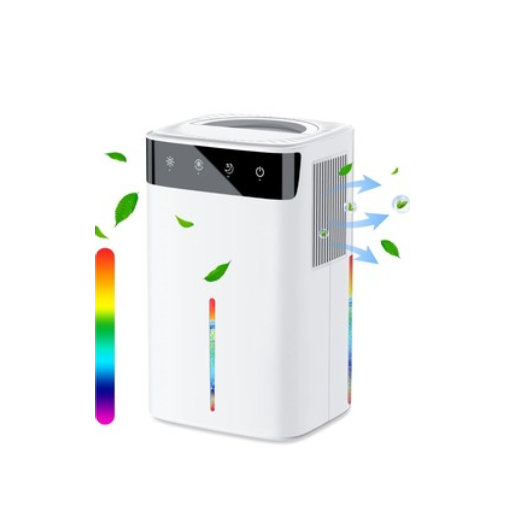
Impact of Energy Efficiency on Operating Costs
Energy efficiency greatly influences the operating costs of a whole-house dehumidifier. A very energy-efficient unit saves electricity while lessening the already existing environmental hazards, thereby being a more sustainable solution for homeowners. Below is an elaborate list of factors that demonstrate the impact of energy efficiency on operational costs:
- Energy Consumption per Hour: Efficient dehumidifiers consume less energy on an hourly basis. For example, an ENERGY STAR-certified dehumidifier will use roughly 15% less energy than those that are not certified, thus accumulating avoidance of substantial energy bills in the long run.
- Annual Energy Savings: Depending on individual patterns and electricity costs, a dehumidifier with high efficiency may save up to $200 in energy costs annually, assuming that it is maintained in operation within a high humidity level.
- Lifecycle Cost Reductions: Although energy-efficient units might demand greater initial expenditures, such units compensate for these costs in lifetime savings through lower consumption of electricity.Present at the random locations in the text
- Performance Optimization in Specific Zones: Efficient units make the energy utilization in challenging sites, such as basements or large crawl spaces, manageable. For instance, with their smart humidity sensor, the advanced units ensure that the system only runs when necessary to maximize savings.
- Environmental Impact or Tax Incentives: Government energy standards recognize high energy-efficient dehumidifiers, which grant a tax credit or rebate to the homeowner. Such incentives, in turn, lessen net operating costs over time.
By favoring an energy-efficient whole-home dehumidifier, homeowners will be in a position to save a considerable amount of money while the environment gains from reduced energy consumption.
Long-Term Savings with Smart Dehumidifiers
In terms of energy management in our houses, smart dehumidifiers stand as a technological triumph, integrating technology with sustainability. They consist of Wi-Fi connectivity and smart controls, which enable homeowners to operate schedules for automation, view humidity levels in real-time, and change the settings from a remote location through smartphone applications. According to studies, depending on household size and climate conditions, smart dehumidifiers use 20-30% less energy compared to traditional ones.
For example, a smart dehumidifier working at 40% relative humidity in a 2,000-square-foot house can save about 400-500 kWh of energy per year, which translates to approximately $50-$70 per year on utility bills. This could sum up to a potential saving of $500-$700 for 10 years, even before considering rebates or incentives available due to energy-efficient certification, such as ENERGY STAR.
Also, predictive maintenance warnings, incorporated within the system, cut down on repair costs by facilitating active maintenance on time. By pairing modern technology and efficiency, smart dehumidifiers henceforth save on running costs and simultaneously cut environmental costs for the longer term, making them a good investment for a new household.
Maintenance and Operating Costs
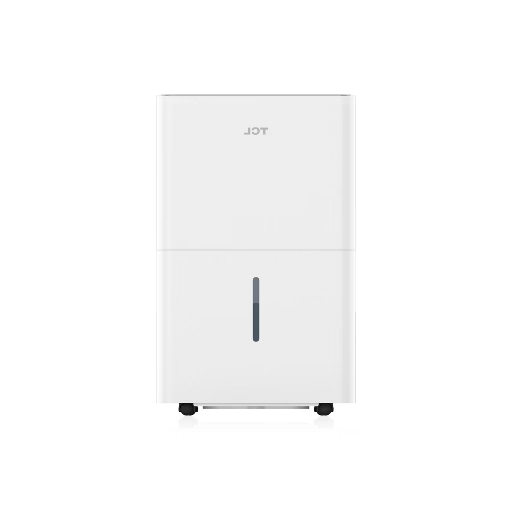
Filter Replacement and Cleaning Requirements
Should a smart dehumidifier remain properly maintained, then it shall ensure a longer service life as well as flawless functioning. The filters collect dust, allergens, and other particles so that the quality of air is maintained. Filter changes or clean-ups should take place at intervals of 1 to 3 months, as per the manufacturer’s recommendation, depending on the level of use and various environmental conditions, such as high levels of dust or pet dander.
A great deal of care needs to be given to the washing of HEPA filters, often found in advanced dehumidifier models. Some HEPA filters can be washed and reused, while others are for single-use only and must be replaced with a new one. Therefore, users should rely on the manufacturer’s directions so that they can meet the demands of their specific unit. Hence, if recommendations are not followed, there will be a reduction in efficiency, an increase in energy-dollar spending, and, in severe cases, the internal parts might get damaged.
For continuous-use purposes, filter replacement indicators are provided in many dehumidifier models to prompt the user for filter cleaning or replacement. These forecasts, culminating from sensor technologies, track the accumulation of debris, thereby assuring maintenance measures are taken timely manner instead of prematurely. Washable filters require cleaning with water that is lukewarm alongside a mild detergent. They must be completely dried before putting them back in the unit to avert the production of mold. Following these practices can enhance dehumidifier performance as well as extend its lifespan, thereby decreasing overall maintenance costs in the long run.
Evaluating Overall Maintenance Costs
The total maintenance price of a dehumidifier is calculated through of analysis of direct and indirect costs during the entire operational life of the dehumidifier. Intensely considered direct costs are those about filter replacements as per schedule, power consumption by the unit, and the replacement of parts for keeping it in suitable condition. High-efficiency units will, therefore, have vehicle expenses for installation due to the initial cost of installation, with the upside of cumulative savings on energy consumption and the cost of installation and maintenance work over the long term.
Estimating overall maintenance costs is a strong function of other variables, including the type of dehumidifier (refrigerant or usually considered a desiccant-based one), environmental conditions, and intensity of the use of the equipment. Some studies have found that when you go to maintain efficient units, you can cut energy costs by some 10-20% annually compared to an old, inefficient unit. By sticking to the manufacturer-recommended service intervals, the weight of a buildup in repair costs over time could be avoided if the unit is kept in good condition and maintained well, so that it will undergo fewer failures later in time.
Potential difficulties could be reduced by purchasing warranty extensions and service plans from the manufacturers. On the other hand, scheduled maintenance further eliminates the possibility of expensive failure of the dehumidifier, ensuring that it will always perform to its design specification. Ultimately, considering the above factors most thoroughly will allow you to anticipate costs more accurately, ensuring the best efficiency to go with that investment return.
Understanding the Cost of Running a Dehumidifier
Several factors, all interconnected, contribute to the “making of” operating costs. First and foremost comes electricity consumption, with the power rating in watts or kilowatts being highly considered. The mere calculation of multiplying the device wattage by the number of hours of operation per day and then factoring in local tariffs will yield accurate energy charges. These are lowered if the manufacturer designs a model using advanced technology to reduce power consumption and maintain high performance, often regarded as energy-efficient machines under programs like ENERGY STAR.
Being one of the factors influencing the cost. While bigger capacity units with larger potential moisture removal per day (in pints or liters) may more energy upfront but have the advantage of raising humidity in a short time and then keep working at comparatively lesser energy; smaller units, however, push energy bills up by way of constant working to meet the demand.
Other variables include ambient humidity and temperature levels, as these factors dictate how often and for how long the dehumidifier works over a particular day in order to maintain or target a desired humidity level. More humid or warmer climes call for longer running hours, thus increasingly draining energy charges. Lastly, maintenance of the unit, including filter check-ups and replacement alongside regular cleaning, keeps the dehumidifier functioning well rather than wasting energy on clogs or wear-outs. A full-fledged consideration of these cumulative factors is what guarantees an accurate assessment of the total running cost projection.
References
-
MOISWELL Defender ME-7 – A detailed resource on commercial dehumidifiers, including specifications and usage.
-
Selecting a Dehumidifier – A guide from Cornell Cooperative Extension discussing dehumidifier selection and operating costs.
-
Basement Moisture Problems – A document from the Needham, MA government website addressing basement moisture issues and dehumidification.
Frequently Asked Questions (FAQ)
Q: What is the typical cost of a dehumidifier for a basement?
A: The cost of a dehumidifier for basement use can range widely depending on the capacity and features. Generally, you can expect to pay between $200 and $600 for a quality unit, with larger models, like a 50-pint dehumidifier, being on the higher end of that spectrum.
Q: How much water can a 50-pint dehumidifier remove from the air?
A: A 50-pint dehumidifier can remove up to 50 pints of water per day from the air, making it ideal for damp basements or areas with high humidity levels. This capacity ensures effective moisture control and helps maintain a comfortable living space.
Q: How do I know if I need a dehumidifier for my finished basement?
A: If your finished basement feels humid, has a musty smell, or shows signs of mold and mildew, you likely need a dehumidifier. Monitoring the humidity level is essential; a reading above 60% indicates that a dehumidifier could be beneficial.
Q: Are there energy-efficient options for dehumidifiers?
A: Yes, many dehumidifiers, including the best dehumidifiers for basements, are Energy Star certified, which means they use less energy while effectively reducing humidity levels. Investing in an energy-efficient model can save you money on electricity bills over time.
Q: What features should I look for when buying a dehumidifier?
A: When buying a dehumidifier for a basement, consider features like capacity (pints per day), built-in pump for continuous drainage, and energy efficiency. Models like the 50-pint dehumidifier with built-in pump offer convenience and effectiveness.
Q: How often do I need to empty the water tank of a dehumidifier?
A: The frequency of emptying the water tank depends on the humidity level and the capacity of the dehumidifier. A larger unit, such as a 50-pint dehumidifier, will require less frequent emptying compared to smaller models, especially if it has a hose for continuous drainage.
Q: What is the difference between a dehumidifier with a pump and one without?
A: A dehumidifier with a built-in pump can automatically expel water to a drain or outside, making it ideal for large basements or areas where manual emptying is impractical. Conversely, a unit without a pump may require more frequent manual emptying of the water tank.
Q: Can I use a dehumidifier in an unfinished basement?
A: Yes, a dehumidifier can effectively reduce humidity levels in an unfinished basement. It’s important to choose a model with adequate capacity for the space to ensure it can handle the moisture and keep the area dry and free from mold.
Q: How can I test dehumidifiers for effectiveness?
A: To test dehumidifiers, monitor the humidity level before and after operation. A decrease in humidity indicates effectiveness. Additionally, consider checking reviews and comparisons of tested dehumidifiers for insights on performance, especially for models recommended for basements.

